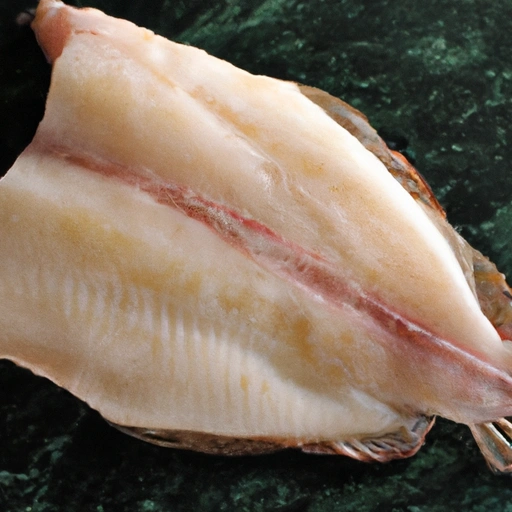Halibut
Description

Halibut is a firm, white fish known for its sweet, mild flavor and lean texture. It is a popular ingredient in kitchens around the world, valued for both its taste and versatility in recipes. Halibut can be found in both the North Pacific and North Atlantic oceans, and is a favorite among chefs and home cooks alike for its ability to absorb flavors and maintain a delicate flake when cooked.
Common uses
Halibut is commonly used in a range of culinary applications, from grilling and baking to poaching and sautéeing. Due to its large size, it is often sold as steaks or fillets. Halibut can also be found smoked, dried, or salted in various regions, which can influence its final taste and texture when used in recipes.
Nutritional value
Calories
A 3-ounce (85 grams) cooked serving of halibut provides approximately 120 calories.
Protein
The same portion size offers about 22 grams of high-quality protein, making it a great choice for maintaining muscle mass and overall health.
Fat
Halibut is low in saturated fat, with around 2.5 grams per serving, and is a good source of heart-healthy omega-3 fatty acids.
Carbohydrates
This fish is essentially carbohydrate-free, making it an excellent choice for low-carb diets.
Vitamins
Halibut is rich in various vitamins, including B12, niacin, and B6.
Minerals
It also contains essential minerals like selenium, phosphorus, and magnesium.
Health benefits
Consuming halibut can contribute to cardiovascular health due to its omega-3 fatty acid content. It also supports brain health and can help in the regulation of inflammation. The vitamins and minerals found in halibut assist in energy production and bone health, among other benefits.
Potential risks
As with many fish, there is a risk of mercury contamination with halibut. Pregnant women and young children are advised to limit their intake. Additionally, overfishing has become a concern, so it is essential to choose halibut from sustainable sources.
Common recipes
Recipes featuring halibut range from simple grilled steaks to elaborate dishes like halibut en papillote. It's also used in stews, fish and chips, and as the protein in fish tacos.
Cooking methods
Popular methods for cooking halibut include grilling, baking, broiling, pan-searing, and deep-frying. Slow-cooking techniques are generally avoided to preserve the delicate texture of the fish.
Pairing with other ingredients
Halibut pairs well with a variety of flavors, including citrus, herbs like dill and parsley, and spices. It also complements vegetables like asparagus and potatoes, and grains such as rice and quinoa.
Summary
Halibut is a versatile and nutritious seafood ingredient that can be used in a multitude of recipes from various cuisines. Its ability to meld with different flavors and cooking techniques makes it a favorite among food enthusiasts worldwide. With its rich historical significance and numerous health benefits, halibut is a valuable addition to any meal plan, provided it is sourced sustainably to mitigate potential environmental risks.